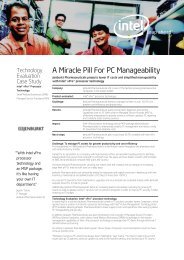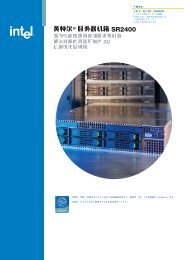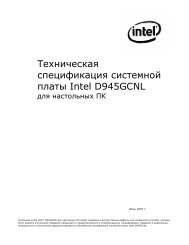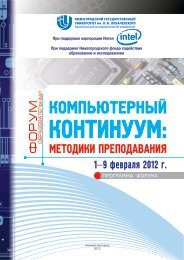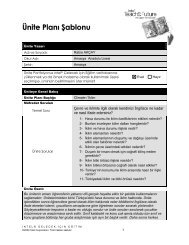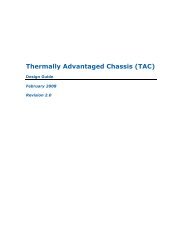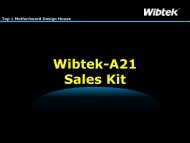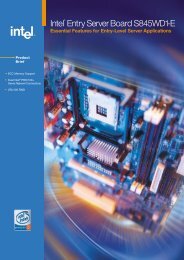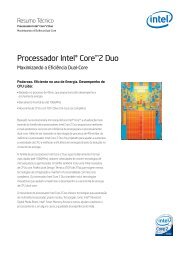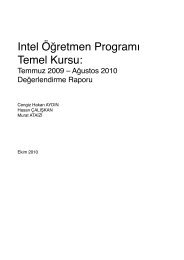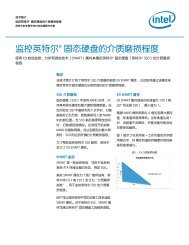Technical Product Specification for Canoe Pass - Preminary - Intel
Technical Product Specification for Canoe Pass - Preminary - Intel
Technical Product Specification for Canoe Pass - Preminary - Intel
Create successful ePaper yourself
Turn your PDF publications into a flip-book with our unique Google optimized e-Paper software.
<strong>Intel</strong> ® Server System P4000CP Power System Options <strong>Intel</strong> ® Server Board S2600CP and Server System P4000CP TPS<br />
supply recovers and meets all turn on requirements. The power supply meets the AC dropout<br />
requirement over rated AC voltages and frequencies. A dropout of the AC line <strong>for</strong> any duration<br />
does not cause damage to the power supply.<br />
108<br />
Table 61. AC Line Holdup time<br />
Loading Holdup time<br />
75% 12msec<br />
13.2.3.5 AC Line Fuse<br />
The power supply has one line fused in the single line fuse on the line (Hot) wire of the AC<br />
input. The line fusing is acceptable <strong>for</strong> all safety agency requirements. The input fuse is a slow<br />
blow type. AC inrush current does not cause the AC line fuse to blow under any conditions. All<br />
protection circuits in the power supply do not cause the AC fuse to blow unless a component in<br />
the power supply has failed. This includes DC output load short conditions<br />
13.2.3.6 AC Line Leakage Current<br />
The maximum leakage current to ground <strong>for</strong> each power supply is 3.5mA when tested at<br />
240VAC.<br />
13.2.3.7 AC Line Transient <strong>Specification</strong><br />
AC line transient conditions are defined as “sag” and “surge” conditions. “Sag” conditions are<br />
also commonly referred to as “brownout”, these conditions is defined as the AC line voltage<br />
dropping below nominal voltage conditions. “Surge” is defined to refer to conditions when the<br />
AC line voltage rises above nominal voltage.<br />
The power supply meets the requirements under the following AC line sag and surge conditions.<br />
Table 62. AC Line Sag Transient Per<strong>for</strong>mance<br />
AC Line Sag (10sec interval between each sagging)<br />
Duration Sag Operating AC Voltage Line Frequency Per<strong>for</strong>mance Criteria<br />
0 to 1/2 AC<br />
cycle<br />
95% Nominal AC Voltage ranges 50/60Hz No loss of function or per<strong>for</strong>mance<br />
> 1 AC cycle >30<br />
%<br />
Nominal AC Voltage ranges 50/60Hz Loss of function acceptable, self<br />
recoverable<br />
Table 63. AC Line Surge Transient Per<strong>for</strong>mance<br />
AC Line Surge<br />
Duration Surge Operating AC Voltage Line Frequency Per<strong>for</strong>mance Criteria<br />
Continuous 10% Nominal AC Voltages 50/60Hz No loss of function or per<strong>for</strong>mance<br />
0 to ½ AC<br />
cycle<br />
30% Mid-point of nominal AC<br />
Voltages<br />
13.2.3.8 Power Recovery<br />
50/60Hz No loss of function or per<strong>for</strong>mance<br />
The power supply recovers automatically after an AC power failure. AC power failure is defined<br />
to be any loss of AC power that exceeds the dropout criteria.<br />
<strong>Intel</strong> Confidential Revision 0.8<br />
<strong>Intel</strong> order number G26942-003



